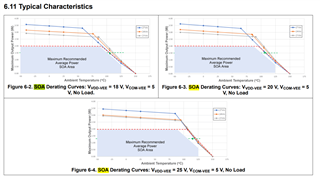Other Parts Discussed in Thread: UCC14240-Q1
I've done a comparison with the UCC14240-Q1 to see what the main differences were and noticed that the over-temperature shutdown thresholds (e.g. TSHUTPPRIMARY_RISING) have increased from from 150 degC (typ) to 160 degC (typ). However, the Operating junction temperature range has remainined with a maximum of 150 degC. Wouldn't this mean that the shutodown would only activate once the device is beyond it's maximum rating (thus not protect the device)?




